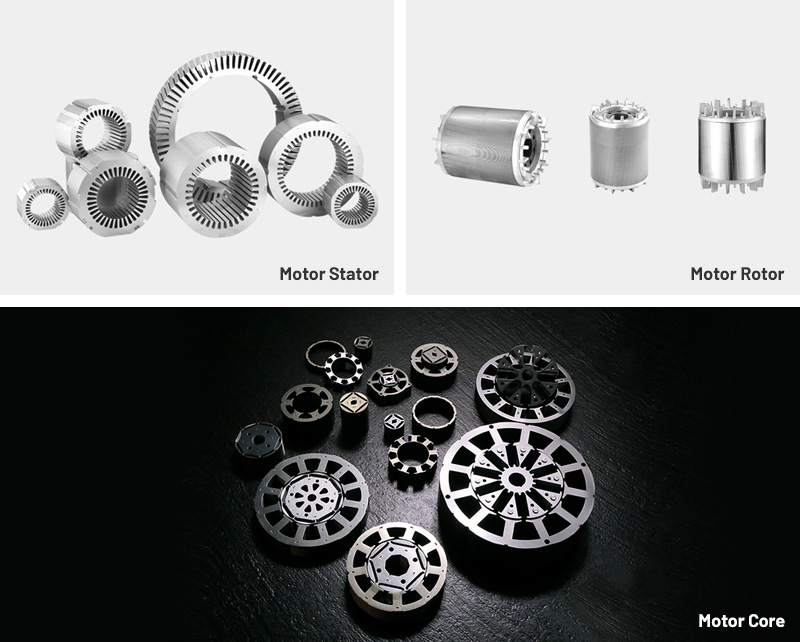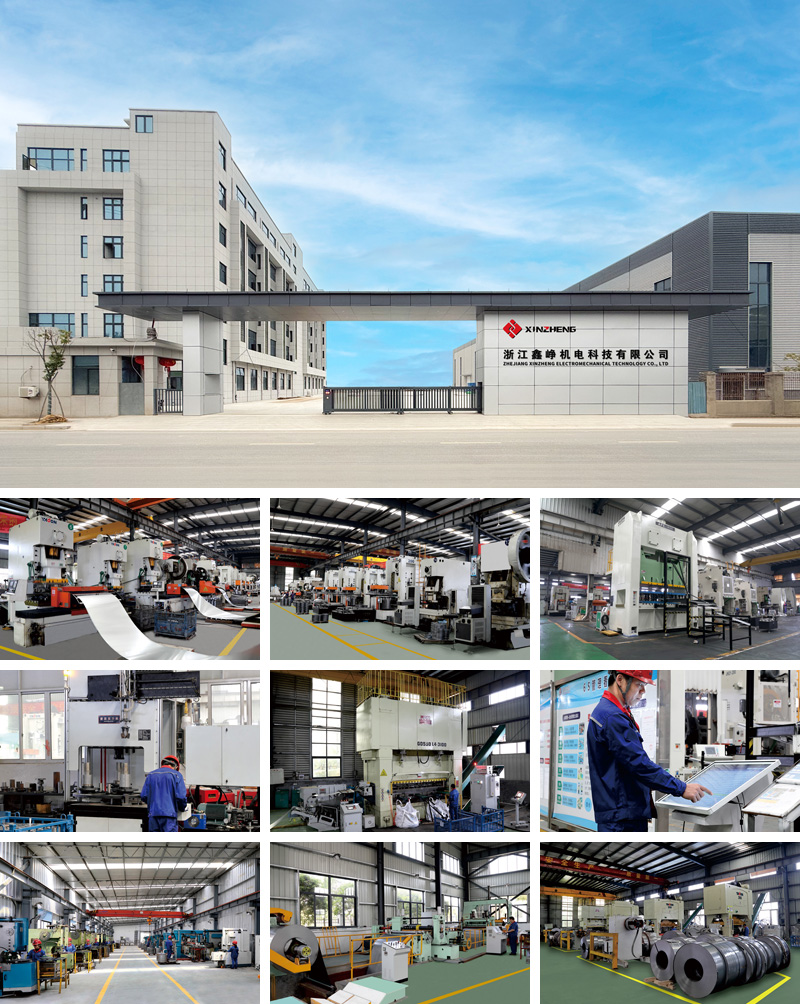The global industrial motor market has been steadily evolving toward higher efficiency and reduced energy consumption, driven by regulatory standards, environmental considerations, and the demand for cost-effective operations. In regions such as Europe and North America, the introduction of stringent efficiency classifications, including IE3 and higher, has placed greater emphasis on the magnetic components of motors, particularly rotor laminations.
YE5 high-efficiency motor rotor laminations are engineered to meet these modern efficiency requirements. By minimizing core losses and optimizing electromagnetic performance, these laminations support industrial motors used in applications ranging from pumps and compressors to fans and general-purpose machinery. The demand for dual-purpose laminations—capable of providing stable torque and low vibration under continuous operation—has grown in line with energy-conscious industrial strategies.
Rotor laminations form the magnetic backbone of squirrel-cage induction motors, guiding magnetic flux while controlling eddy currents and mechanical stress. The YE5 series introduces design improvements to enhance high-efficiency performance.
The rotor laminations provide a controlled path for magnetic flux generated by the stator windings. Optimized lamination geometry ensures uniform flux distribution across rotor bars, reducing localized saturation and maximizing torque output.
Total core loss in a rotor consists of hysteresis loss and eddy-current loss. YE5 laminations are manufactured from high-grade, low-loss electrical steel with precise thickness and insulation coatings, ensuring minimal energy dissipation even during continuous operation.
Rotors experience centrifugal forces and thermal expansion during operation. Precision interlocking and consistent lamination stacking maintain mechanical integrity, minimize vibration, and protect rotor bars from deformation or stress-induced fatigue.
Reduced core loss directly contributes to lower heat generation within the rotor. YE5 laminations maintain magnetic performance across varying temperatures, enabling motors to operate safely under demanding industrial conditions.
YE5 rotor laminations typically use non-oriented electrical steel with silicon content optimized for magnetic permeability and low hysteresis loss. Critical material properties include:
Consistent magnetic permeability
Low core loss under rated frequency and flux density
High electrical resistivity to reduce eddy currents
Mechanical strength to withstand centrifugal forces
Lamination thickness commonly ranges from 0.35 mm to 0.50 mm depending on rotor diameter and motor power rating.
Slot geometry affects rotor current distribution, magnetic flux uniformity, and harmonic generation. The YE5 series features:
Optimized slot width and depth to improve rotor bar filling and reduce resistance
Skewed or shaped laminations to minimize torque ripple and acoustic noise
Symmetrical designs that enhance dynamic balance during rotation
High-speed, progressive stamping dies produce laminations with tight dimensional tolerances. Factors controlled during stamping include:
Burr height to avoid insulation damage
Tooth width consistency to maintain flux path uniformity
Edge straightness to reduce stacking gaps and vibration
Laminations are stacked using interlocking tabs, welding, or adhesive bonding. Proper stacking ensures:
Mechanical rigidity
Minimal vibration
Accurate alignment for rotor bar casting
Laminations are coated with inorganic or hybrid insulation films. Coating thickness and adhesion quality are crucial to:
Prevent interlaminar short circuits
Maintain core loss performance
Provide thermal stability during prolonged operation
Several factors determine whether YE5 rotor laminations can consistently deliver high-efficiency performance:
Electrical Steel Grade – Variations in chemical composition or magnetic properties can significantly affect core loss.
Dimensional Accuracy – Even minor deviations in tooth width, lamination diameter, or thickness can influence electromagnetic behavior and rotor balance.
Insulation Integrity – Poor coating adhesion increases eddy-current losses and reduces thermal tolerance.
Stack Compression and Alignment – Uneven stacking can cause vibration, noise, and reduced torque.
Rotor Bar Fit – Proper slot geometry ensures uniform current distribution and reduces hotspots during operation.
For manufacturers seeking reliable YE5 rotor laminations, supplier evaluation focuses on:
Material Traceability: Steel batch documentation and magnetic property certification.
Tooling Precision: High-quality dies capable of producing consistent lamination shapes.
Quality Control Systems: Including core loss testing, insulation adhesion checks, and dimensional verification.
Production Capacity: Ability to deliver consistent batches for high-volume motor production.
Compliance: Adherence to IEC and ISO standards relevant to motor laminations.
Reliable suppliers reduce variability, lower scrap rates, and ensure long-term motor performance.
Despite advancements, challenges remain in rotor lamination manufacturing:
Electrical Steel Price Fluctuations – Impact overall production cost.
Tool Wear and Burr Formation – Leads to dimensional drift and potential insulation damage.
Thermal Stress – Repeated heating cycles can degrade insulation or core integrity.
Rotor Vibration – Imbalanced laminations may induce noise, wear, and energy loss.
Strict Efficiency Margins – High-efficiency standards leave minimal room for manufacturing deviation.
YE5 high-efficiency motor rotor laminations are applied across multiple industrial sectors:
Pumps in water treatment and petrochemical plants
Compressors in HVAC systems and industrial facilities
Fans for ventilation and air circulation
General-purpose industrial motors requiring continuous duty and low energy consumption
Mechanical handling equipment with variable speed or frequent start-stop cycles
In each case, the laminations’ low core loss and thermal stability support reduced energy consumption and longer motor life.
Manufacturers are increasingly adopting higher resistivity, low-loss steel grades to meet more stringent efficiency requirements.
Hybrid inorganic-organic coatings enhance thermal resistance and insulation reliability.
Laser-cut laminations provide better tolerances and reduced mechanical stress compared to traditional stamping.
Digital inspection, automated stacking, and real-time data collection improve production consistency and traceability.
Eco-friendly production, scrap reduction, and recycling of electrical steel are becoming standard in high-efficiency lamination manufacturing.
Q1: What differentiates YE5 rotor laminations from standard laminations?
They use low-loss steel, precise stamping, and durable coatings to achieve higher motor efficiency and thermal stability.
Q2: What thickness is typical for YE5 laminations?
Thickness ranges from 0.35 mm to 0.50 mm depending on rotor size and motor power.
Q3: How does insulation coating quality affect performance?
Proper adhesion prevents eddy currents, reduces local heating, and ensures long-term efficiency.
Q4: Are YE5 rotor laminations suitable for variable-speed applications?
Yes, they maintain low core loss and mechanical stability under frequent start-stop or dual-speed operation.
Product Category

Comprehensive Strength


Copyright © Zhejiang Xinzheng Electromechanical Technology Co., Ltd. All Rights Reserved.
This website uses cookies to ensure you get the best experience on our website.